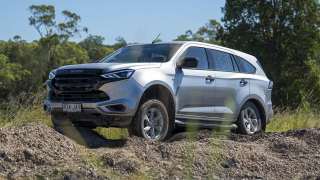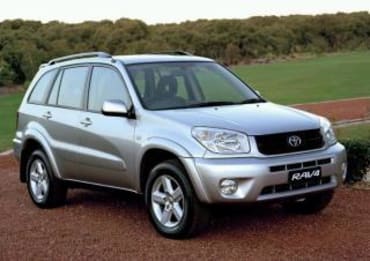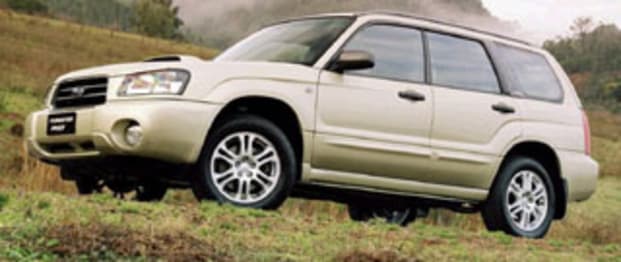
Used Hyundai Tucson review: 2004-2008
- Hyundai Tucson
- Hyundai Tucson 2007
- Hyundai Tucson 2008
- Hyundai Tucson 2004
- Hyundai Tucson 2005
- Hyundai Tucson 2006
- Hyundai Tucson Reviews
- Hyundai Reviews
- Hyundai SUV Range
- SUV
- Hyundai
- Used Car Reviews
- Buying tips

Building cars people want is a sure way to success, as Hyundai discovered with the Tucson SUV. The Tucson marked the beginning of a successful new era for Hyundai after a worrying slump in sales in the years preceding the all- purpose family wagon.
From a high of 60,000 in 1997 sales had slipped to half that in the years before the Tucson arrived. As the end of the year approaches Hyundai is sitting comfortably near the top of the sales charts, its sales racing ahead of last year's. While the Tucson is not alone in driving this success it is one of the models that have contributed to it; it's one people want.
MODEL WATCH
When the Tucson hit the market in 2004 Australia was in the grip of an SUV fever; any company without one was doomed the struggle. Ford was desperate to get one, and the Territory was the result, while Holden was scrambling to find one somewhere in the General's global portfolio, and eventually found the Captiva.
Hyundai's response was the Tucson, a compact crossover wagon created to compete with the likes of the Nissan X-Trail, Toyota RAV4, Honda CR-V and other similar vehicles.
The Tucson looked much the same as the other SUVs in the market; it was a pleasant looking wagon with chunky lines that gave a solid look on the road. The interior was roomy and flexible, with the ability to fold the seats flat to swallow whatever a family might need to carry, for sports or camping gear, to DIY hardware for that home reno project.
There were also lots of handy nooks and crannies to stow things securely out of the way, plus shopping bag hooks and tie-downs for restraining larger items being carried.
Hyundai launched three models initially, all powered by a 2.7-litre double overhead camshaft V6 backed by a four-speed sequential shift automatic transmission.
A willing revver, the V6 would put out 129 kW at 6000 revs and 241 Nm at 4000 revs when at its peak. There was a lockable centre diff, and all-wheel drive system was a Borg-Warner 'on-demand' one that automatically transferred drive to the rear wheels when needed for traction.
A few months after the initial launch, in February 2005, Hyundai added a front-wheel drive model, the City, to the range. The City was powered by a double overhead camshaft two-litre four- cylinder engine that churned out 104 kW and 184 Nm. It too was backed up by a four-speed sequential shift auto.
The V6 range started with the Tucson, which came standard with air, remote central locking, power windows and mirrors, and there was a full-sized spare wheel and tyre.
Step up a rung and you got a Tucson Elite, which boasted among other things a sunroof, wider tyres and a trip computer. Make it all the way to the top and you found yourself in an Elite S with body-coloured bumpers and side cladding. When it arrived the City was also well equipped.
IN THE SHOP
Hyundai has racked up more awards for its build quality than most in the last five or so years, so that's a good guide to the potential reliability you're likely to experience.
Rarely to Hyundai's feature in the carsGuide complaints columns, which means owners are generally content. Engines, gearboxes, drivelines all seem strong and reliable; there is little that seems to plague the body and hardware.
All round the Tucson is getting through life with few concerns; those problems that do crop up are usually of a minor nature. Make the usual checks for a service record to ensure the maintenance has been done, and of course look for signs of crash repairs that might not have been well done.
IN A CRASH
The Tucson is quire well equipped to handle a crash. All models came standard with ABS antilock brakes, EBD brakeforce optimization, and traction control.
They also came standard with dual front airbags, but the Elite and Elite S also boasted the added protection of head airbags and side front airbags.
ANCAP gave the Tucson four stars in 2006.
AT THE PUMP
Hyundai claimed the 2.0-litre Tucson would do 9.2 L/100 km on average, the 2.7-litre V6 11.0 L/100 km. A carsGuide road test at the time of the launch had the V6 doing an average of 14.5 L/100 km. Owners are saying they are happy with the economy of the 2.0-litre Tucson and getting around 9.5 L/100 km.
OWNERS SAY
John Murray has clocked up 70,000 km in his 2006 Tucson. He says its chunky style makes it easy to get in and out of for a 58-year-old, and the interior is roomy.
On the road it is quiet and feels very car-like, the auto works well, the cruise and air are good, but the 2.0-litre engine, while economical, could do with more grunt.
John also says the dealer service is expensive. He was told at the 30,000 km that the power steering fluid was contaminated and needed replacing. It was not covered by warranty and cost $106. Worse, he says, was that he wad told that had he not replaced the fluid future claims might have been denied.
Paul Anderson has traveled 80,000 km in his 2006 Tucson City auto, which he says has never missed a beat. It is very good value for money with a good level of standard equipment, has a flexible interior with the ability to fold the seats down flat for carrying gear, and is economical.
Paul's only complaint, something he'd like fixed before he would buy another one, is the gearing in the auto.
"It takes forever to change up, and works very hard to change up from first to second, and to third in particular," he says.
LOOK FOR
. Heaps of equipment
. Roomy, flexible interior
. Choice of AWD or FWD
. V8 grunt or economy of four
. Good value-for-money
THE BOTTOM LINE
A well-equipped, value-packed, competent and reliable wagon for the family on the go.
RATING
80/100
Pricing
| Year | Price From | Price To |
|---|---|---|
| 2008 | $4,290 | $8,910 |
| 2007 | $3,850 | $7,920 |
| 2006 | $3,080 | $7,370 |
| 2005 | $2,860 | $7,040 |
| 2004 | $2,860 | $6,160 |
Pricing guides
Range and Specs
| Vehicle | Specs | Price* | |
|---|---|---|---|
| (base) | 2.7L, ULP, 4 SP | $3,850 – 5,610 | 2004 Hyundai Tucson 2004 (base) Pricing and Specs |
| Elite | 2.7L, ULP, 4 SP | $4,180 – 6,160 | 2004 Hyundai Tucson 2004 Elite Pricing and Specs |
| Elite S | 2.7L, ULP, 4 SP | $2,860 – 4,510 | 2004 Hyundai Tucson 2004 Elite S Pricing and Specs |
Other cars to consider
$3,850
Lowest price, based on third party pricing data










